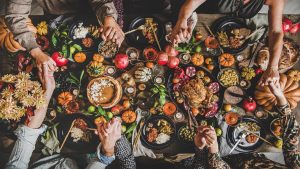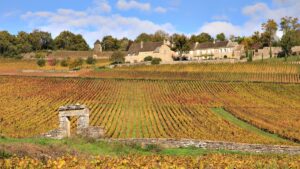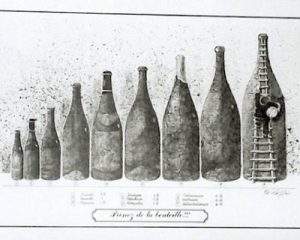
Non-vintage Champagne, otherwise known as non-vintage brut (BSA or brut sans année in French) to those who know it well, is the most authentic representation of Champagne. Made from a blend of varieties, vintages, and vineyards, it is able to remain relatively unchanged year in, year out. Let’s focus on the type of wine that has made the region successful and have a look back at the history of a Champagne wine-growing landscape that was devastated by war.
Champagne on the brink of ruin in the wake of war
The Champagne region was left in ruins after the First World War with 60% of the city of Reims being destroyed as the front line cut through the heart of the Marne Valley. The production area decreased by 40% over the four-year period between 1914 and 1918. Only 6,000 hectares remained in production compared to the almost 34,000 hectares there are today. Some grand crus areas were devastated, such as the village of Verzenay where only 75 of the 500 hectares survived. Making wine at this time was very costly given the expenses incurred, and winegrowers reported suffering from financial difficulties. On top of that, there was the phylloxera epidemic, which really wreaked havoc throughout the region…
The inter-war period was also not an easy time for winegrowers. There were endless reasons as to why exports were always limited, such as the former enemy of the Great War, Russia, who were historically a large consumer of Champagne, and their Revolution which occurred between the years 1917 and 1923, the American Prohibition from 1920-1933 and the stock market crash of 1929…
To make matters worse, at the time, the phenolic ripeness of the grapes was not always easy to achieve. Good vintages were mixed with bad vintages, which is something that almost never happens today, thanks in part to global warming and technological advances. The creation of non-vintage Champagne is therefore an obvious way of tackling these problems of maturity and erasing the vintage effect. But what exactly is non-vintage Champagne?
What is non-vintage brut Champagne?
Non-vintage Champagne is a mix of different grape varieties, vineyard plots and vintages. It involves a certain art that the Champagne region has mastered to absolute perfection – the art of blending.
Each year, following the harvest, the grapes are vinified separately, with top-quality Champagne houses doing this on a parcel-by-parcel basis, depending on the grape varieties, plots and vinification method, such as malolactic or non-malolactic. Moreover, some wines are aged in oak barrels and others are not. In short, a multitude of different wines are produced. This is where the cellar master works, tasting all the wines from the very beginning of their production, alongside a tasting panel. The cellar master starts thinking about his blends from the get-go, so as to reproduce a Champagne with the same style year after year, which embodies the famous house’s style!
This Champagne is made up of:
- A base, which is the most recently harvested vintage
- A reserve wine, which is composed of wines from different vintages, stored in order to ensure consistency.
The proportions of these components vary greatly from one Champagne house to another, each infusing their Champagne with their own unique style.
Non-vintage Champagne: A house’s trademark
The style of the Champagne house in question emerges through its non-vintage Champagne. This style, which is supported by an expert cellar master, is constantly renewed, so as to reproduce an almost identical Champagne from one year to the next. This guarantees that you taste the same Champagne year after year with the vintage having very little impact no matter where you are in the world.
Non-vintage brut is also strategically produced, representing over 90% of all Champagne production. This is because it is sold at a relatively affordable price and is typically the least expensive of a house’s wines. Most houses do not hesitate when it comes to including top-quality grapes in their non-vintage brut blends meaning that this cuvée is no longer a ‘mixed bag’ as it might have been in the days when bad vintages plagued Champagne.
Although the great cuvées of each house, for example the vintage Champagnes, contribute to their prestige, the non-vintages bruts help to position the house in terms of overall quality.
Here are a few examples of some of the most famous non-vintage brut cuvées:
- The Carte d’Or from Maison Drappier, which is available in very large formats, is a vinous and gourmet cuvée with a very high Pinot Noir content around 80%.
- The Brut Réserve from Maison Taittinger, which is predominantly made up of Chardonnay grapes (around 40% of the blend) which is rare for a non-vintage brut, is produced using 35 different vineyard plots.
- The Special Cuvée by Bollinger, which is made from over 85% grand cru and premier cru grapes, is aged for around three years in the cellar.
- The Brut Réserve from Maison Billecart-Salmon is made using three grape varieties that come from the best terroirs in Marne and is aged for 30 months on lees: a benchmark Champagne.
In recent years, a number of Champagne houses and winemakers have abandoned the idea of non-vintage Champagne in favour of multi-vintage.
This has been the case at Louis Roederer, where cellar master Jean-Baptiste Lécaillon decided to move away from this type of wine. In doing so, he has given himself the freedom to create a different Champagne each year, even though the Roederer style remains distinctly recognisable, with the Collection 242 (based around the 2017 harvest) and 243 (based around the 2018 one).
Maison Jacquesson is also well known for its multi-vintage Champagnes, with the cuvées 743, 744, 745, etc.
Krug sets an example in this area, producing only great Champagnes, including the Grande Cuvée, with the most recent one being the 170th edition, a highly prestigious multi-vintage cuvée.
And if you want to know more on the regions, there is always our guide to Champagne and our article that explains the different between Blanc de Blancs and Blanc de Noirs.



